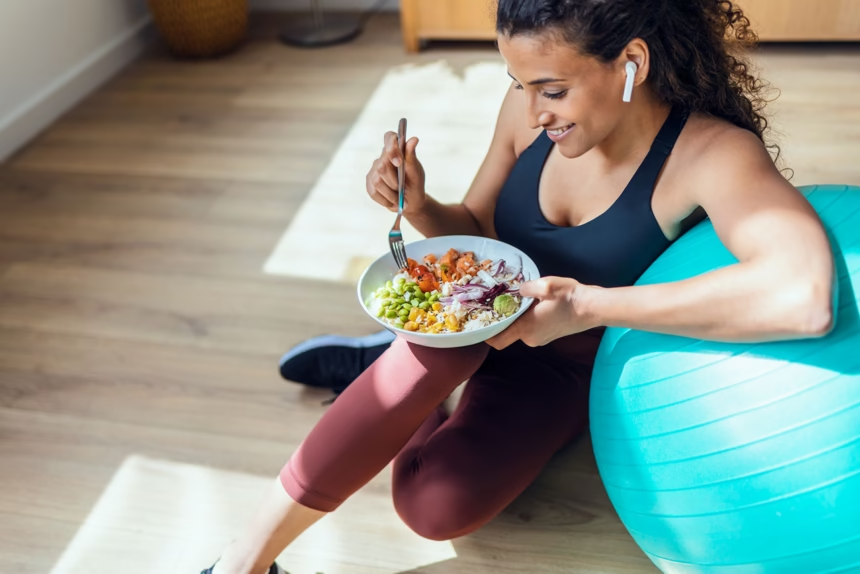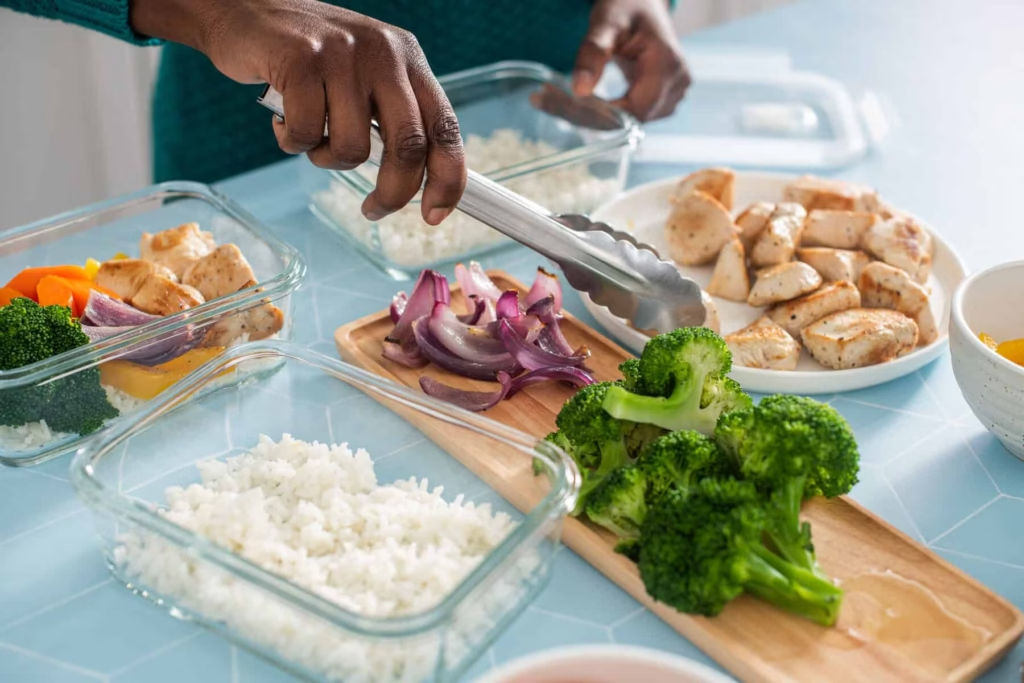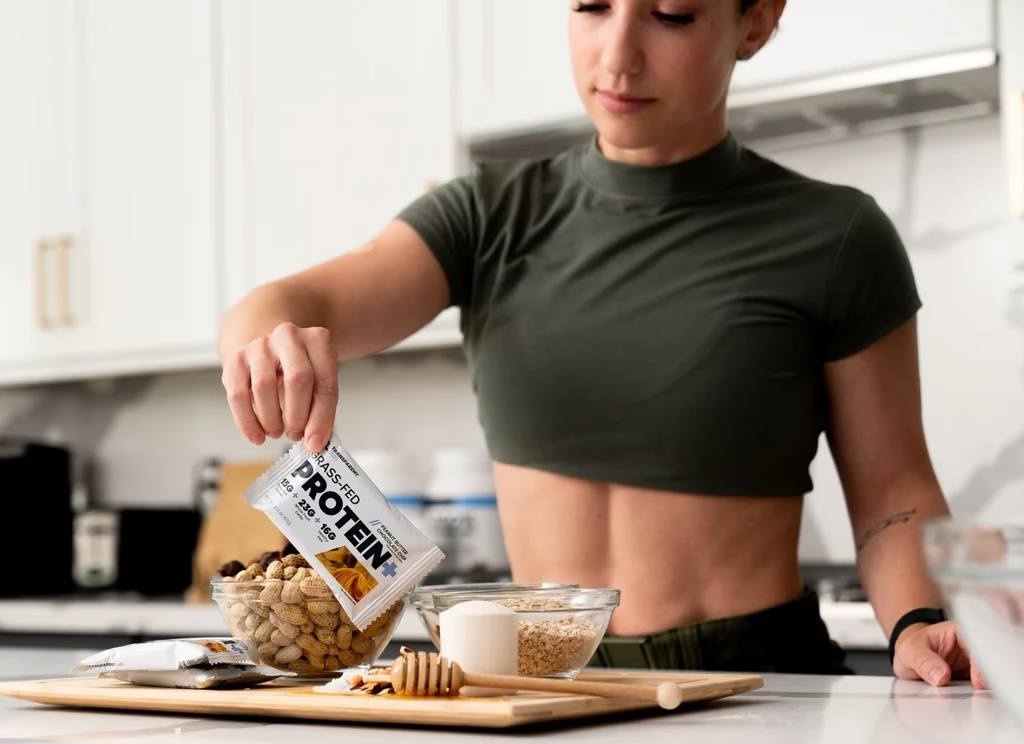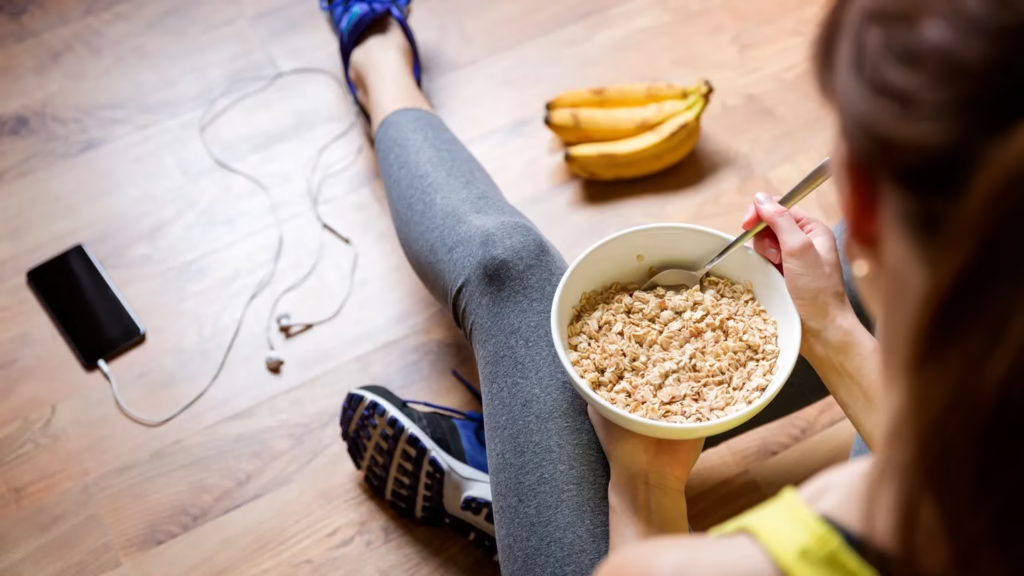Want to build muscle and lose fat at the same time without guesswork? Here is the simple promise: eat most carbs around workouts to lift harder, recover faster, and keep progress steady.
Body recomposition means adding muscle while dropping fat. The quick answer from recent research in 2024 to 2025 is clear: eat carbs before training for energy, then pair carbs with protein after recovery training. Total daily carbs still matter most.
These tips help most lifters. Exact needs depend on training volume, body size, and goal.
Why Carb Timing Matters For Recomposition In 2025
Carbs power hard sets, protect performance, and refill glycogen. Glycogen is the stored form of glucose in muscle, and it fuels sets in the 6 to 20 rep range. More glycogen means more reps, better volume, and stronger pumps, which all support growth and next-day training quality.
Recent studies from 2024 to 2025 point to a simple pattern. Pre-workout carbs boost performance, post-workout carbs with protein speed recovery, and overall daily intake is still the driver of results. Carb timing fine-tunes outcomes by sharpening training quality, which is the key input for recomposition.
Timing does not replace eating enough protein, managing calories, or getting enough sleep. It adds an extra edge.
What Body Recomposition Means
Recomposition is gaining muscle while losing fat. It happens best with strength training, high protein intake, and enough carbs to train hard. Keep it simple and steady.
New Study Takeaways At A Glance
- Pre-workout carbs, 30 to 240 minutes before lifting, improve performance.
- Post-workout carbs with protein within 30 to 120 minutes help recovery and muscle repair.
- For most people, total daily carbs and protein matter more than exact timing, but timing around workouts gives an extra edge.
How Carbs Support Lifts, Pumps, And Recovery
Glycogen acts like a fuel tank in muscle, and it powers sets of 6 to 20 reps. Higher glycogen supports more total work and a better pump, which are strong growth signals. After training, pairing carbs with protein helps refill glycogen and reduces muscle breakdown, so the next session starts on a full tank.
Best Time To Eat Carbs Around Workouts For Muscle Gain And Fat Loss
Most lifters can follow this today. Keep the plan simple and repeatable, then adjust based on performance and appetite.
Pre-Workout: 30 To 240 Minutes Before Lifting
- Goal: fuel performance and steady energy.
- If 2 to 4 hours before: eat a balanced meal with 0.5 to 1.0 g/kg carbs, lean protein, and a little fat. Choose easy-to-digest carbs like rice, oats, potatoes, fruit, or bread.
- If 30 to 60 minutes before: take a small snack with 15 to 40 g fast-digesting carbs, and optional 10 to 25 g protein. Examples: banana with whey, low-fat yogurt with honey, toast with jam.
- Keep fibre and fat lower close to training to avoid stomach issues.
During Training: For Long Or Very Hard Sessions
- If lifting lasts over 75 to 90 minutes, or volume is very high, sip 20 to 40 g carbs per hour from a sports drink, juice diluted with water, or dextrose with electrolytes.
- This helps keep power and focus late in the session.
- Most short strength workouts do not need intra-workout carbs.
Post-Workout: Within 30 To 120 Minutes With Protein
- Eat 0.3 to 0.6 g/kg carbs plus 0.25 to 0.4 g/kg protein after training.
- Aim for a normal mixed meal if appetite is good, or a shake and fruit if not.
- Examples: chicken and rice with fruit, Greek yogurt with cereal and berries, whey shake with a bagel and jam.
- The goal: refill glycogen, support muscle repair, and recover better for the next workout.
How Much To Eat Around Workouts
- Simple rule: place 50 to 70 percent of daily carbs in the 4 to 6 hour window around training.
- Example for a 70 kg lifter at 4 g/kg per day, 280 g carbs: 160 to 200 g near training, the rest spread out.
- Adjust up on high-volume days, down a bit on very easy days.
Daily Carb Targets And Food Quality That Support Recomposition
Total intake sets the base, timing polishes the result. Keep food choices simple, budget-friendly, and repeatable. Hydration and sodium make pumps and performance better, especially in heat or long sessions.
How Many Carbs Per Day
- Use 3 to 6 g/kg per day for most lifters, based on training volume and steps.
- Lower end for light training or smaller deficits, higher end for high-volume lifting or athletes.
- Keep protein high at about 1.6 to 2.2 g/kg per day. Fill the rest with mostly whole foods.
- Keep a small calorie deficit for fat loss, or a small surplus for lean gain, based on the goal.
Best Carbs Before And After Lifting
- Before: pick easy carbs that sit well, like rice, oats, potatoes, bananas, applesauce, low-fibre cereal, bread or tortillas.
- After: Use a mix of medium to higher GI carbs with lean protein. Add fruit or dairy for quick carbs and micronutrients.
- Keep very high-fat and very high-fibre meals away from the training window if they upset the stomach.
Rest Days, Carb Cycling, And Appetite
- On rest days, move more carbs to breakfast and lunch, keep protein the same, and choose higher fibre plants to stay full.
- Carb cycling tip: slightly higher carbs on hard training days, slightly lower on light or rest days, while weekly calories stay aligned with the goal.
- Keep energy stable by spreading carbs across 3 to 5 meals.
Hydration, Electrolytes, And Fibre
- Hydrate well to store glycogen effectively. Add a pinch of salt to pre- or post-training meals if sweating a lot.
- Keep daily fibre moderate, about 10 to 15 g per 1,000 kcal, and lower fibre close to training if needed.
- These small steps improve pumps, stamina, and recovery.
Put It Into Action: Schedules, Samples, And What To Track
Simple templates help turn ideas into results. Start with a plan that fits the training time, then track performance and adjust.
Timing By Workout Time
- Morning training: a small snack 30 to 60 minutes before if appetite allows, like whey and fruit or toast with honey. A bigger post-workout brunch with carbs and protein.
- Lunch training: a balanced breakfast with carbs and protein, a light pre-workout snack, normal post-workout meal.
- Evening training: a carb-heavy lunch, small pre-workout snack, solid post-workout dinner with carbs and protein.
- Shift workers: center most carbs around the training window, no matter the clock time.
Sample Day For A 70 kg Lifter
- Daily carbs example at 4 g/kg, about 280 g.
- Breakfast: oats with whey and berries, about 70 g carbs.
- Pre-workout snack: banana and yogurt, about 40 g carbs.
- Post-workout dinner: grilled chicken, potatoes, and fruit, about 100 g carbs.
- Evening snack: cereal with milk, about 70 g carbs.
- This is one example, and readers should scale portions to their needs.
One-Week Recomp Template
- Aim for 3 to 4 lifting days and 1 to 2 light cardio days.
- Place higher carbs on lifting days, mostly around workouts.
- Keep protein steady every day. Keep steps and sleep consistent.
- Adjust carbs by 10 to 15 percent after two weeks if progress stalls.
Common Mistakes And What To Track
- Mistakes: training hard with no pre-workout carbs, saving all carbs for one late meal, cutting carbs too low while trying to gain muscle, and skipping protein after training.
- Track: weekly weight trend, waist or hip measure, workout performance, and progress photos every 2 to 4 weeks.
- Use these signs to adjust carbs and timing slowly.
Quick Timing Cheatsheet
| Window relative to training | Carbs target | Protein target | Notes |
|---|---|---|---|
| 2 to 4 hours pre | 0.5 to 1.0 g/kg | 0.25 to 0.4 g/kg | Balanced meal, easy carbs, a little fat |
| 30 to 60 minutes pre | 15 to 40 g | 10 to 25 g | Fast carbs, low fibre and fat |
| During long sessions | 20 to 40 g per hour | n/a | For 75 to 90+ minutes or very high volume |
| 30 to 120 minutes post | 0.3 to 0.6 g/kg | 0.25 to 0.4 g/kg | Mixed meal or shake plus fruit |
Conclusion
For recomposition, the plan is simple. Eat most carbs before and after lifting, pair post-workout carbs with protein, and let total daily carbs and protein lead the way. Pick one change to test this week, like adding a small pre-workout snack or moving more carbs into the training window. Track lifts and waist for four weeks, then adjust based on performance and progress. Small, consistent steps win.


















